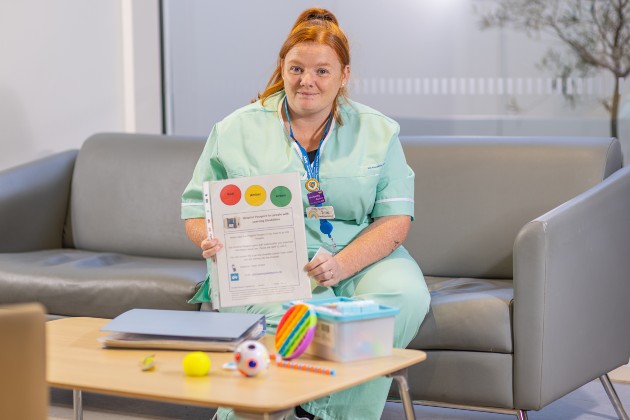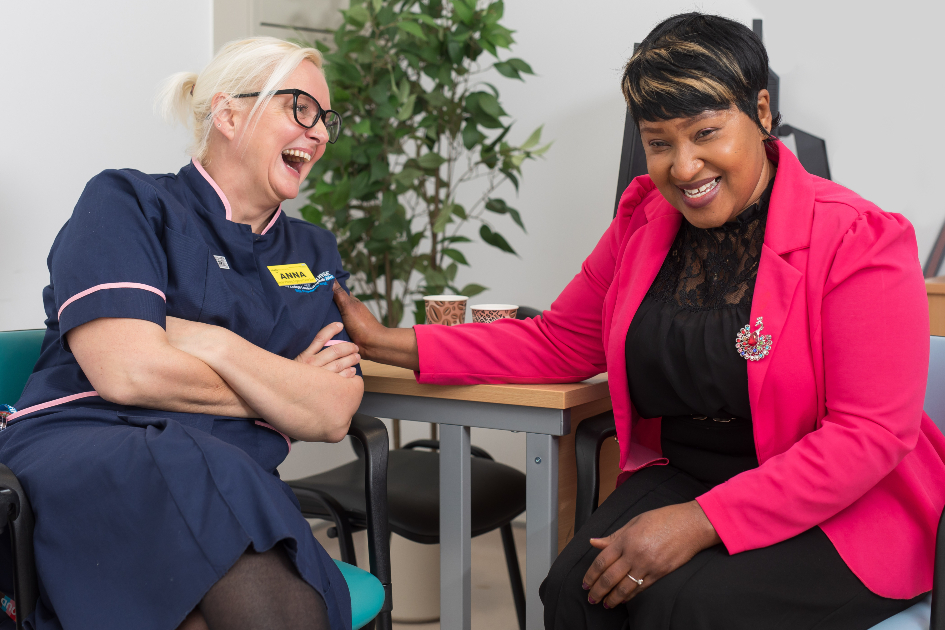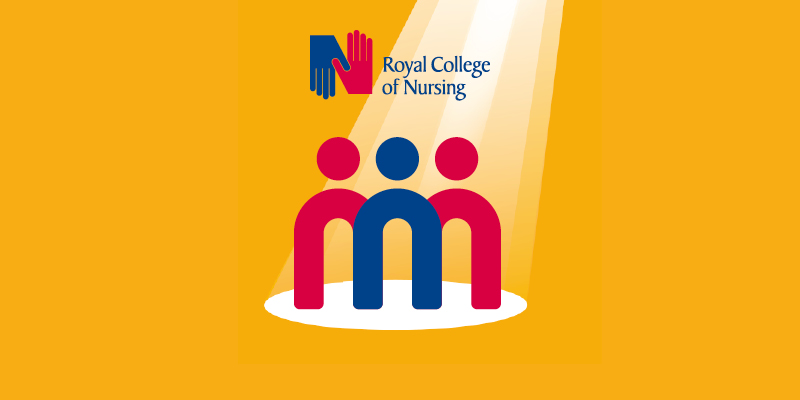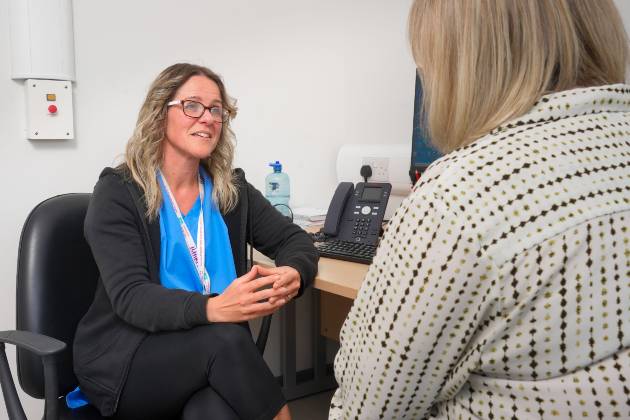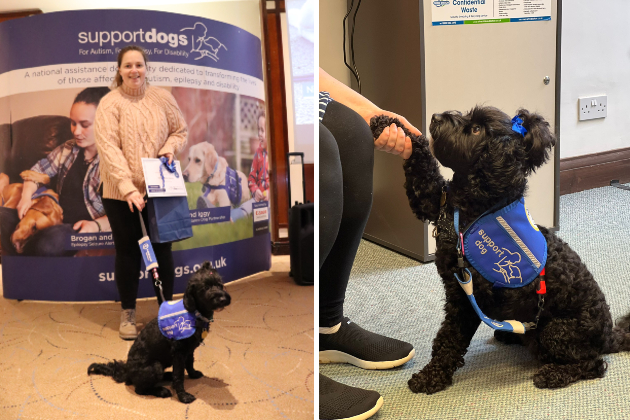There aren’t many of us who’d count laying on a blanket on the floor of a side room in a hospital as a successful day at work. But for Tara, it was just that. By being there it meant she had gained the trust of a frightened young person and was able to give him the care and treatment he needed.
The young person was living with attention deficit hyperactivity disorder (ADHD), and he’d come to the emergency department at Torbay Hospital after falling over. He needed some clinical interventions to glue and Steri-Strip his knee, but was very afraid of the environment he found himself in. So first he needed someone to reassure him and explain things to him in a way he could understand.
The trauma of the accident had already been too much for him and when faced with a waiting room full of people, he began screaming. Tara knew she had to address the trauma before she could attend to his wound. She explains:
“With his mum watching in tears, I took him to a side room where I’d put blankets on the floor and gave him a popping bracelet to use to help him relax. When he was comfortable, I laid next to him on the floor and just waved at him. Eventually he let out a deep breath. I could see he was exhausted after three hours of screaming.
Making reasonable adjustments is key to ensuring people have a voice
“By being patient, understanding and creating a calm environment I was able to do his vital observations. We both had our feet in the air, and we played ‘buzzy bees’ with the thermometer, where I pretended a bee is buzzing around trying to take his temperature. Then, as I dressed his wound, we sang ‘Pat a cake,’ patting the wound gently to get cleaned and dressed. To be honest I just made up the song as I went along, but we understood each other which helped me care for him.”
Seeing the individual
This is just one of many incidents that take place in a busy emergency department every day, but for Tara it demonstrates why it’s so important to consider a young person as an individual, and especially if they have additional needs.
Her work as a health care assistant (HCA) is essential to the smooth running of the department. Alongside her already busy job she’s taken on the roles of wellbeing buddy and a learning disability champion. Her motto is to make at least one person smile every shift.
She’s taken practical steps too, getting sensory toys donated for people on the autism spectrum to use in her department and has set up a folder with communication cards for non-verbal people to use.
She also promotes the use of hospital passports for parents and is currently working on getting ‘I have a hidden disability’ cards introduced in the department.
Her longer-term goal is to get a film made which shows a walk through from the entrance of the hospital and off an ambulance into the paediatrics area to introduce and familiarise people with what will happen before they’re in crisis.
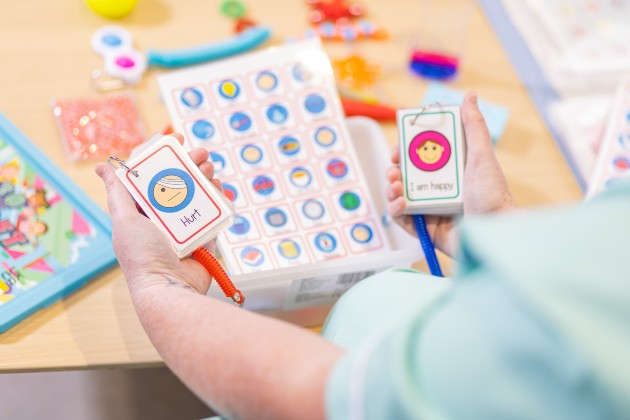
“People don’t want to make a scene or a big fuss, but they do want inclusion,” she says.
It’s hard for many young people, including those with a learning disability, to feel included in emergency care environments, she explains, and this is something she’s addressing head-on.
“I encourage parents and carers to use the hospital passport and our communication aids to ensure everyone is heard. Making reasonable adjustments is key to ensuring people have a voice.
"Parents feel reassured if they see their child distracted by a stress ball when we’re doing blood tests on them. They know they would otherwise be very upset.”
Tara links in with the whole learning disability team to ensure she maintains trust values and guidance and follows the appropriate pathways so what she does is in line with what the rest of the hospital is doing.
Clear and empathic communications are key, she says.
“I talk to the young people who come to our department. If they have ADHD, for example, I stress that the ADHD label doesn’t define them. ADHD is not who they are as a person.
“I believe we could all have some kind of label. It’s just that some of us are more neurodiverse than others. Understanding this can be the start of someone’s more positive journey.”
I just want to support them the best way I can
First impressions make a difference too, Tara says.
“With teenagers especially, I stand in the doorway first – and don’t force myself into their space. I ask how they would like to be addressed; what name they would like me to use; what their gender is. I always seek their permission to do anything and take things slowly and steadily.
“It’s important they know they’re in a non-judgemental space and that I just want to support them the best way I can.”
An explanatory booklet
Working in partnership with a registered paediatric nurse colleague, Tara’s developed a booklet for HCAs in the emergency department to use when treating children and young people. It covers the observations needed on a child such as blood pressures, checking the muscles, safeguarding referrals; sepsis; and what’s normal for the individual child. It also contains relevant links for more information.
The booklet also encourages nursing staff to listen to parents and carers too. “They know their child best,” says Tara, “When we see a young person running around and looking outwardly well but they’re not acting as their parent expects them to, it’s important to listen.”
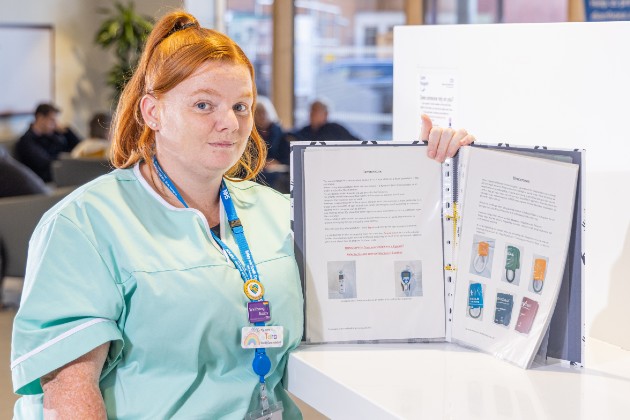
Another important message the booklet contains is that teamworking is key.
“I want other HCAs to know that if there’s anything they’re unsure of or concerned about, it’s always OK to get a second opinion. However long you’ve been in the team and whatever your role, you may need a second opinion. None of us can be perfect every day.”
It was Tara’s own personal learning experiences that led to the development of the booklet.
“I started making notes on best practice when caring for children as part of my own education,” she explains. “I was going through a few challenges, and I wanted to give myself a focus and ensure I was retaining the information I needed – proving that I could do it. My colleague saw it and asked if I’d be happy to share it with other HCAs, which I was.”
Positive attitude
For Tara, the way the booklet was developed shows the importance of seeing positives in what may otherwise seem bleak situations.
“It demonstrated my own personal worth. It can sometimes be hard for any of us to see the positives, but if you look hard enough, they’re there.”
However, Tara is also aware of the practical challenges facing all nursing staff. For her, the biggest challenge is space. “There’s no room for distressed children – they need their own waiting room,” she says.
Everyone needs to feel valued in their roles
“I am determined my patients will have a good experience and reflect on how they were treated positively,” she says, adding that she’s grateful to have great colleagues she can always speak to before she goes home after her shift. “We’re all there for each other. I could have the worst shift in the world, but the team support I have gets me through it.”
Celebrating HCAs
Tara celebrated Nursing Support Workers Day, supported by LV, in November last year. “Everyone needs to feel valued in their roles,” she says. “We’re one big team and everyone deserves respect. A&E can be a challenging place to work so it’s important everyone is told what a great job they’re doing. I want to make sure HCAs are not forgotten about.
“To do this job you have to care, have a range of skills and want to make people smile. I want nothing but the best for children, young people and their families. I know it sounds like a cliché, but children are our future and I want them to leave the hospital knowing that they felt understood, respected and better than when they arrived.”
Further information
Find out more about the RCN Emergency Care Association and the several forums for nursing staff working with young people.


